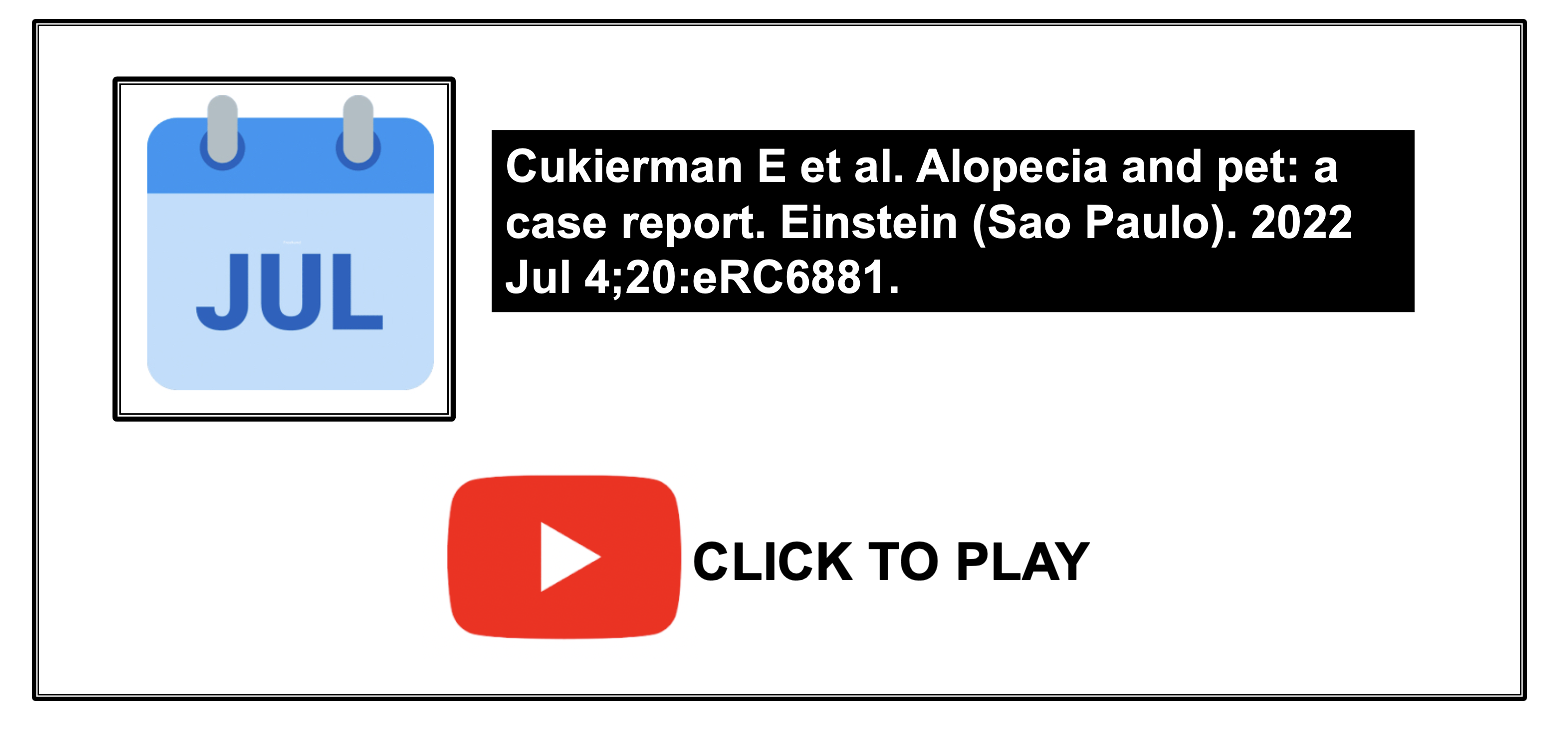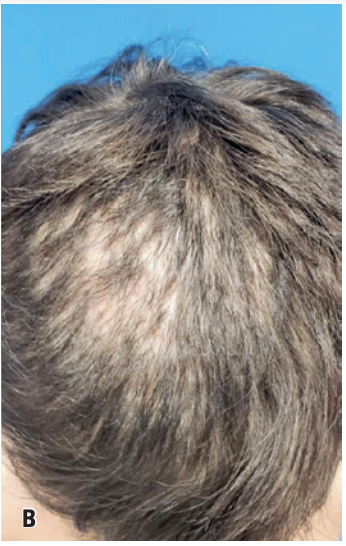Guinea Pigs: An Important Source of Tinea Capitis
Complete Histories Are Always Important in Children Presenting with Tinea Capitis.
Dermatophytoses are a type of fungal infection that causes disease in either the skin, hair or nails. Dermatophytes are filamentous fungi belonging to three different genera: Trichophyton, Microsporum and Epidermophyton.
Dermatophyte infections may be acquired from other human beings (anthropophilic) or animals (zoophilic), or through contact with contaminated objects or soil (geophilic).
Tinea Capitis and the Kerion variant
Tinea capitis is a specific dermatophytosis affecting the scalp. Tinea capitis is a prevalent disease in prepubertal children and may manifest in a variety of ways including focal areas of hair loss. Patients often have itching and trichoscopy shows classic signs like comma hairs, corkscrew hairs, i hairs, morsecode hairs, zig zag hair, bent hairs, block hairs (see article “Trichoscopy of tinea capitis”). Cervical lymph node swelling may be present in some children.
The more severe forms of tinea capitis are the inflammatory forms. One such form is the kerion (also called kerion celsi). Patients with kerion present with boggy, crusty, painful plaques of hair loss often with cervical lymphadenopathy. Kerions may progress to scarring alopecia and permanent hair loss and so need urgent attention and systemic treatment.
Kerion tends to develop most often in pediatric patients aged 5 to 10 years and is caused primarily by Zoophyllic fungi (including Microsporum canis, Trichophyton verrucosum, Trichophyton equinum and Microsporum nanum and T benhamiae).
Trichophyton mentagrophytes may also cause Kerion but this is less common.
Trichophyton mentagrophytes is commonly found in animals increasingly seen in the household environment, such as rabbits, guinea pigs, porcupines, chinchillas and other rodents. It is also found on horses, dogs, cats, calves, and monkeys as well as many wild animals such as foxes, muskrats, squirrels. Trichophyton benhamiae is said to be part of the “Trichophyton mentagrophytes complex” and is mainly isolated from guinea pig. Many cases of tinea capitis previously thought to be due to Trichophyton mentagrophytes are now understood to be Trichophyton benhamiae.
Cukierman E et 2022
In a new study published in 2022, authors describe a 7-year-old female patient with kerion caused by T. mentagrophytes. Her history is interesting and worth noting. She presented to the emergency department on November 20, 2019 with an extensive scalp lesion and fever. The lesion had been noticed 2 weeks prior and had now become worse and this prompted the emergency room visit.
The patient had a history of scabies and recurrent Tinea corporis and had been submitted to sequential treatment with antibiotics. Oral antibiotics were replaced by intravenous antimicrobial medication. She had also been prescribed topical terbinafine for 7 days and isoconazole nitrate.
Examination of the child in the emergency department showed an extensive scalp lesion measuring 15 x 20cm. The lesion were accompanied by purulent discharge. The area of hair loss itself measured approximately 10 x 3cm. Laboratory tests revealed elevated neutrophils, ESR of 61 mm and CRP levels <5.
Tinea capitis caused by T mentagrophytes in a 7 year old guinea pig owner. From Cukierman E et al. Alopecia and pet: a case report. Einstein (Sao Paulo). 2022 Jul 4;20:eRC6881. Used with creative commons license.
The severity of the presentation prompted the medical team to admit the patient to hospital. She was started on intravenous antimicrobial therapy (sodium cefuroxime). Surgery was performed on November 21, 2019. to debride the area, drain fluid collections and get tissue for biopsy and culture. Direct examination suggested dermaphytosis infection. Therefore, combined treatment with oral terbinafine and intravenous fluconazole was prescribed. Eventually terbinafine was then replaced with griseofulvin and intravenous fluconazole was maintained. Fungal culture results obtained on November 26, 2019 revealed Trichophyton mentagrophytes. Fluconazole was then replaced with itraconazole and griseofulvin was maintained. The patient improved and tinea capitis resolved. There was however, some degree of permanent hair loss as shown below.
Hair regrowth occurred following aggressive debridement and antifungal treatment. At three months post infection, there was evidence of some degree of permanent hair loss. From Cukierman E et al. Alopecia and pet: a case report. Einstein (Sao Paulo). 2022 Jul 4;20:eRC6881. Used with creative commons license.
T. mentagrophytes, T benhamiae and Guinea Pigs: What’s the connection?
T. benhamiae and T mentagrophytes are both common in guinea pigs and guinea pigs often harbour these fungi asymptomatically. Most guinea pigs infected with Trichophyton mentagrophytes fail to develop clinical signs and become asymptomatic carriers of the fungus. The prevalence of Trichophyton mentagrophytes infection ranges from 1.4 to 34.9% in these animals.
In a study published in 2013 by Hiruma et al, Trichophyton mentagrophytes was isolated from 19 out of 20 completely asymptomatic guinea pigs housed in a zoo in the city of Urayasu, Japan.
In 2019, Bartosch et al. demonstrated that, in a group of 41 animals housed together (rabbits, rats, mice and guinea pigs), 18 out of 26 guinea pigs had dermatophytosis, although only 11 showed clinical signs. Of 18 confirmed cases, 11 were caused by Trichophyton mentagrophytes and 15 were due to T benhamiae. 8 of the guinea pigs had both types. Dermatophytosis was less common in the other animals and rabbits were not affected at all.
The prevalence of zoonotic T. benhamiae infections has increased worldwide over the last 15 years. T benhamiae has spread ubiquitously to guinea pigs since the turn of the millennium and is an emerging problem. In a study in 2016, T. benhamiae was isolated in more than 90% of (55 of 59) of the guinea pigs sampled in 15 pet shops in Berlin (Kupsch, 2017). Overall, it’s estimated that 50-90 % of guinea pigs have T benhamiae. Just like with T mentagrophytes, a large proportion of guinea pigs are completely asymptomatic.
Consultation with a vet is important for guinea pig owners to determine asymptomatic carriage. Topical treatments are available to help erradicate fungi.
Understanding the unique dermatophytes transmitted by guinea pigs is important. According to Kaveecage.com, there are an estimated 3.8 million guinea pigs in the United States, 1.5 million in Germany, 800,000 in the UK, 800,000 in France and about half a million in each of Canada, Spain and Italy
REFERENCE
Cukierman E et al. Alopecia and pet: a case report. Einstein (Sao Paulo). 2022 Jul 4;20:eRC6881.
Hiruma J, Kano R, Kimura U, Takamori K, Suga Y, Hiruma M et al. Mating type gene for isolates of Trichophyton mentagrophytes from guinea pigs. J Dermatol. 2014;41(8):743-45.
Kupsch C, Ohst T, Pankewitz F, et al. “The agony of choice in dermatophyte diagnostics—performance of different molecular tests and culture in the detection of Trichophyton rubrum and Trichophyton interdigitale” Clinical Microbiology and Infection (2016) 735.e11-735.e17
Bartosch T, Frank A, Günther C, Uhrlaß S, Heydel T, Nenoff P et al. Trichophyton benhamiae and T. mentagrophytes target guinea pigs in a mixed small animal stock. Med Mycol Case Rep. 2018;23:37-42.
This article was written by Dr. Jeff Donovan, a Canadian and US board certified dermatologist specializing exclusively in hair loss.



